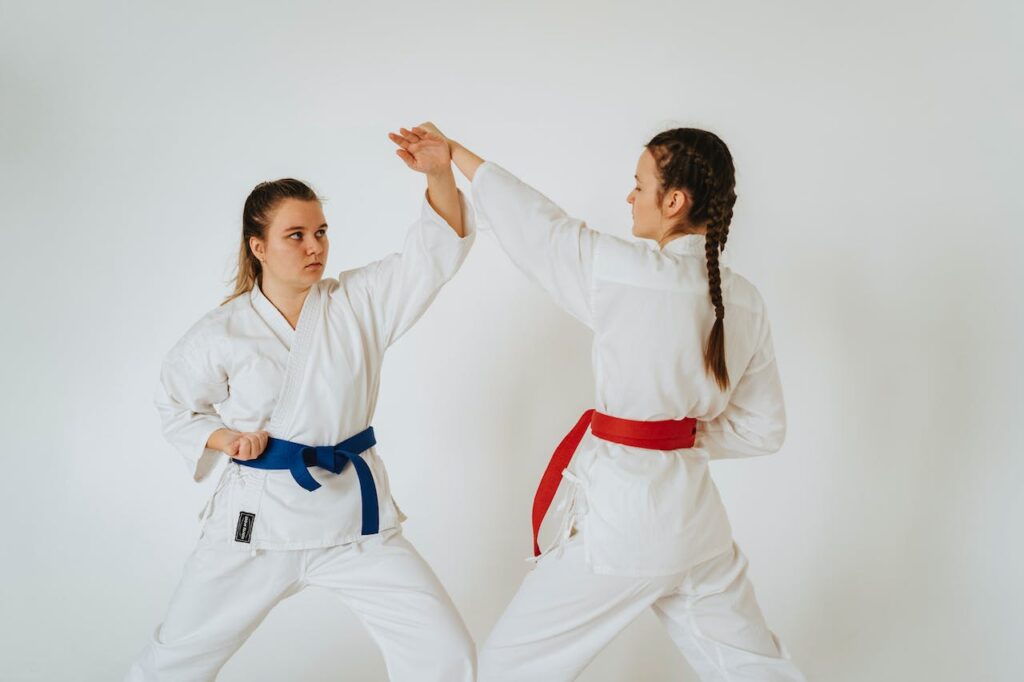Brazilian Jiu-Jitsu (BJJ) is a martial art that goes beyond physical strength, emphasizing technique and leverage. Central to the BJJ experience is the traditional uniform known as the kimono or gi. This article explores the rich history, components, and evolution of BJJ kimonos, shedding light on the significance of this attire in the world of Brazilian Jiu-Jitsu.
THE ART OF BJJ GI: UNVEILING THE SECRETS OF BRAZILIAN JIU-JITSU UNIFORMS
The Origin of BJJ Kimonos:
The roots of BJJ kimonos can be traced back to traditional Japanese martial arts. The early practitioners of Jiu-Jitsu, including the Gracie family who played a pivotal role in the development of BJJ, adopted the traditional Japanese martial arts attire. Over time, as Jiu-Jitsu evolved and adapted in Brazil, the kimono became an integral part of the art.
Components of a BJJ Kimono:
1. Jacket (Gi Top):

The jacket is typically made of durable, heavyweight fabric to withstand the rigors of training. It features a thick collar that provides a grip for various techniques. The jacket is secured with a series of reinforced stitching and is an essential component for both offensive and defensive strategies.
2. Pants (Gi Bottoms):
BJJ pants are designed to be sturdy and comfortable. They often include reinforced knees to withstand intense grappling and groundwork. The pants, like the jacket, are secured with a drawstring or elastic waistband, allowing for a secure fit during training and competitions.
3. Belt:
The belt in Brazilian Jiu-Jitsu signifies a practitioner’s rank and skill level. The color of the belt indicates the wearer’s progress, starting from white for beginners and progressing through various colors until reaching the coveted black belt. The belt is tied in a specific way, and promotions are a significant aspect of a BJJ practitioner’s journey.
Evolution of BJJ Kimonos:
1. Material Innovation:
Modern BJJ kimonos often feature advanced materials that balance durability and comfort. Cotton, ripstop, and hybrid weaves are commonly used to create kimonos that can withstand the demands of training while providing flexibility and breathability.
2. Cut and Fit:
The cut and fit of BJJ kimonos have evolved to accommodate the dynamic movements involved in grappling. Tailored designs, specific reinforcements, and strategic stitching contribute to a gi that allows practitioners to move freely while maintaining durability.
3. Customization:
With the growth of BJJ’s popularity, there’s a rise in customized kimonos. Many brands offer personalized patches, embroidery, and unique designs, allowing practitioners to express their individuality while adhering to the traditional uniform standards.
Significance of BJJ Kimonos:
1. Tradition and Respect:
The BJJ kimono carries the weight of tradition and respect within the martial art. It reflects the roots of Jiu-Jitsu and the respect practitioners have for the art’s history and lineage.
2. Equality on the Mat:
The uniform provides a level playing field for practitioners during training and competitions. The gi minimizes advantages based on body type or physique, emphasizing technique and skill over physical attributes.
3. Discipline and Identity:
Wearing a BJJ kimono is a symbol of discipline and commitment. It creates a sense of identity within the BJJ community and fosters a connection to the broader tradition of martial arts.

Conclusion:
The BJJ kimono is more than just a uniform; it is a symbol of the deep-rooted traditions, respect, and evolution within Brazilian Jiu-Jitsu. As practitioners continue to push the boundaries of the art, the gi remains a constant, connecting the modern BJJ enthusiast to the rich history and discipline that define this martial art. Whether a white belt just starting the journey or a black belt with years of experience, the BJJ kimono serves as a common thread that unites practitioners on the mats worldwide.

